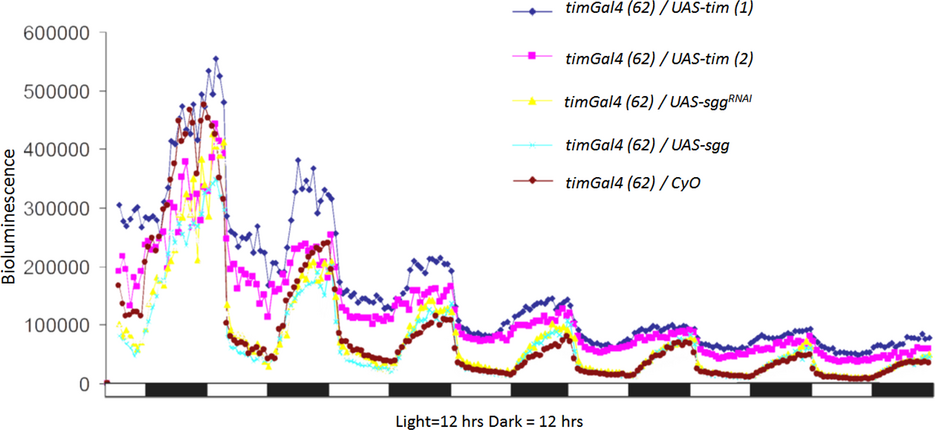New publication of Robin Fischer and colleagues
19.01.2016Robin Fischer, Charlotte Förster and Nicolai Peschel show that the GSK-3 Kinase Shaggy has a different role in the molecular clockwork as hitherto expected.
Cryptochrome (CRY) is the primary photoreceptor of Drosophila’s circadian clock. It resets the circadian clock by promoting light-induced degradation of the clock protein Timeless (TIM) in the proteasome. Under constant light, the clock stops because TIM is absent, and the flies become arrhythmic. In addition to TIM degradation, light also induces CRY degradation. This depends on the interaction of CRY with several proteins such as the E3 ubiquitin ligases Jetlag (JET) and Ramshackle (BRWD3). However, CRY can seemingly also be stabilized by interaction with the kinase Shaggy (SGG), the GSK-3 beta fly orthologue. Consequently, flies with SGG overexpression in certain dorsal clock neurons are reported to remain rhythmic under constant light. We were interested in the interaction between CRY, Ramshackle and SGG and started to perform protein interaction studies in S2 cells. To our surprise, we were not able to replicate the results, that SGG overexpression does stabilize CRY, neither in S2 cells nor in the relevant clock neurons. SGG rather does the contrary. Furthermore, flies with SGG overexpression in the dorsal clock neurons became arrhythmic as did wild-type flies. Nevertheless, we could reproduce the published interaction of SGG with TIM, since flies with SGG overexpression in the lateral clock neurons shortened their free-running period. We conclude that SGG does not directly interact with CRY but rather with TIM. Furthermore we could demonstrate, that an unspecific antibody explains the observed stabilization effects on CRY.
Fischer R, Helfrich-Förster C, Peschel N. 2016. GSK-3 Beta Does Not Stabilize Cryptochrome in the Circadian Clock of Drosophila. PLoS ONE 11:e0146571.









